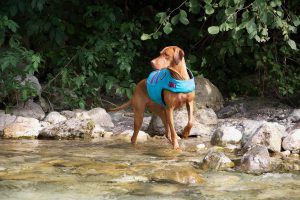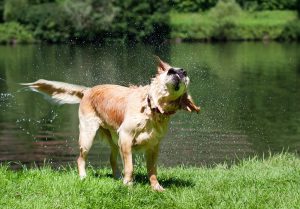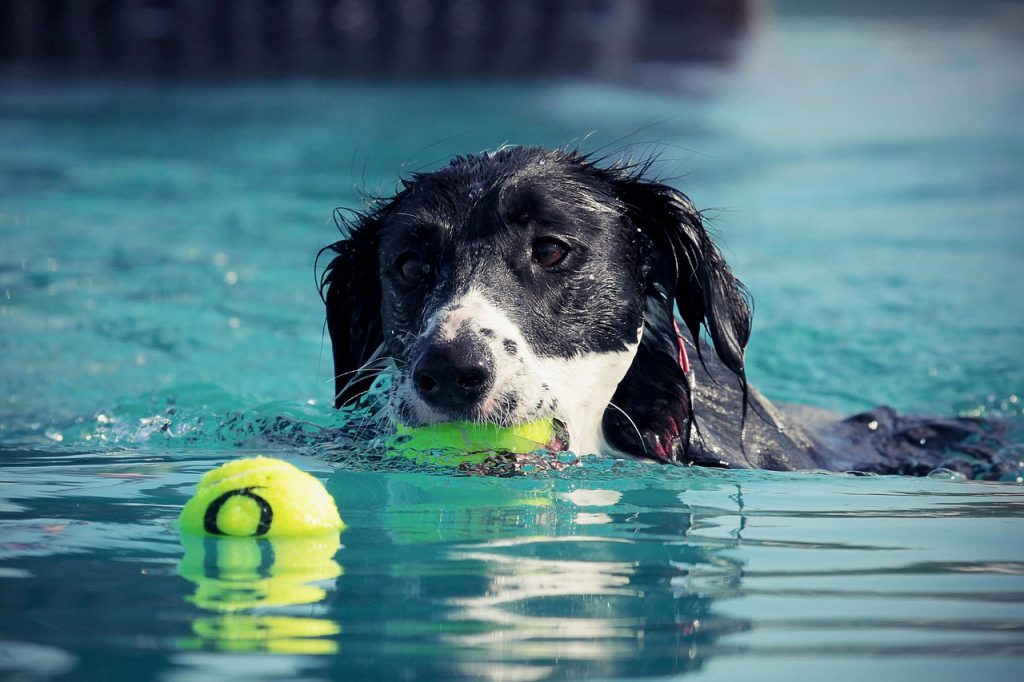Allowing your four-legged friend to enjoy a refreshing swim on a hot summer day can be a great way to help him keep cool while getting in some exercise time. Of course, safety should always be top priority whenever your pets are involved, so put these swimming safety tips to good use before letting the fun begin.
Do Not Presume That All Dogs Are Excellent Swimmers

While many dog breeds such as Labrador retrievers and poodles were literally bred for the water, there are other breeds such as pugs and bulldogs whose anatomy makes swimming difficult and even dangerous. If your dog has very short legs, a large chest with small hindquarters, or a very short muzzle, chances are good that he will struggle in the water. A life jacket designed for dogs is a good idea if your pup isn’t built for the water.
Both puppies and elderly dogs can tire quite easily, so keep an extra close eye on them. A first-time swimmer may need some encouragement from you until he gains some confidence and gets the hang of swimming. Keep your hand underneath his belly at first to encourage him to use all four legs, and stay in the water with him in case he panics.
Give Dogs a Drink Before the Swim
Pools usually contain chlorine, so drinking this water should not be allowed. Natural bodies of water such as lakes, ponds, and oceans can all be teeming with harmful germs and bacteria. Make sure your dog is well hydrated before a swim so that he won’t be tempted to sample the water.
Watch Out For Hidden Dangers

Natural bodies of fresh water can be home to things like venomous snakes, snapping turtles and alligators. Know what is commonly found in your area before attempting a swim session. Jellyfish are commonly found in the ocean and can deliver painful stings. Things like riptides, broken glass, and sharp shells also can pose a hazard.
Diseases like giardia and leptospirosis are sometimes lurking in bodies of water and can cause serious illness. Talk with your vet about vaccine options available for your pets before letting them swim.
Lakes, ponds, and swamps sometimes are home to blue-green algae, which are actually not algae at all but rather a toxic form of bacteria. Contaminated water will often have warning signs posted. Take them seriously, as blue-green algae can be fatal.
Provide a Way Out
If you are making use of a backyard pool, take the time to teach your furry friend how to exit the pool, just in case he ever takes a dip when you are not around. If there are no stairs in the pool, provide a ramp of some sort so that no animal ever becomes trapped in the pool.
Clean Up After
It is a good idea to thoroughly bathe your pet after a swim to remove any harmful bacteria that might be clinging to the fur. Be sure to always use a pet-safe shampoo and to pay close attention to those ears. A dog’s ears are particularly prone to infection because of the warm, moist environment inside. There are ear cleaning solutions available at most pet supply stores, or you can use apple cider vinegar and a gauze pad.
Let the Fun Begin
With some preventative measures, your canine companion can enjoy going for a swim while getting some great exercise too!
Fon Jon Pet Care has been serving the San Diego area for more than 30 years. We can help you with your dog training, daycare, and boarding. Call us today at 858-280-3657





















